DJ COMMUNITY
Posted in Interviews on 11 Jan 2024
High Tech, Maximum Impact | Harbinger VARI Live Powered Speakers

Harbinger VARI Live powered speakers have undergone a renaissance-like transformation. The popular loudspeaker line is still affordable, expandable and easy to use, but for the new 2000 and 3000 series models—as well as the VS12 and VS18 subwoofers—the Harbinger team endeavored to further improve sound quality and projection, upgrade features and deliver no-compromise performance.
The Harbinger VARI Live V2408 and V2410 offer onboard Class-D amplification, a built-in stereo mixer, Bluetooth connectivity and selectable DSP voicings. The V3412 and V3415 models “tech up”—and significantly enhance sound quality—with PEEK tweeters, XR woofers and app control. All VARI Live speakers are designed to seamlessly integrate with the VS subwoofers.
In this exclusive interview, Guitar Center Product Manager for Private Brands, Live Sound, Amps and Effects Patrick O’Connor reveals how Harbinger—as a Guitar Center brand—is able to compile direct customer feedback to help the in-house design team devise savvy and intuitive features to address and surpass the needs of gigging musicians and DJs.
What were your main development goals for the new VARI Live 2000 and 3000 series?
Patrick O'Connor: Increased articulation and clarity. The ability to hear every element of a mix or music program is the difference between a really good speaker and an okay speaker. You should hear the full soundscape with all of its well-differentiated details, rather than a blur of colors.
For example, take the song “I Will Remember” by Toto, which starts off with a big, sparse drum part and then brings in a vocal, a synthesizer and a piano all playing the same note. On the new speakers, we were able to reproduce the mix so accurately that you may find yourself noticing all the subtle details of each separate element of that production for the first time, and with much greater detail and clarity than you're used to hearing. A superior speaker provides that level of accuracy. Nothing blurs the fine details of the sound.
What types of things did you and your team undertake to ensure the sonic upgrades to the VARI Live series were spot on?
We did a ton of competitive shootouts. We are constantly asking ourselves, “Can we be better?”
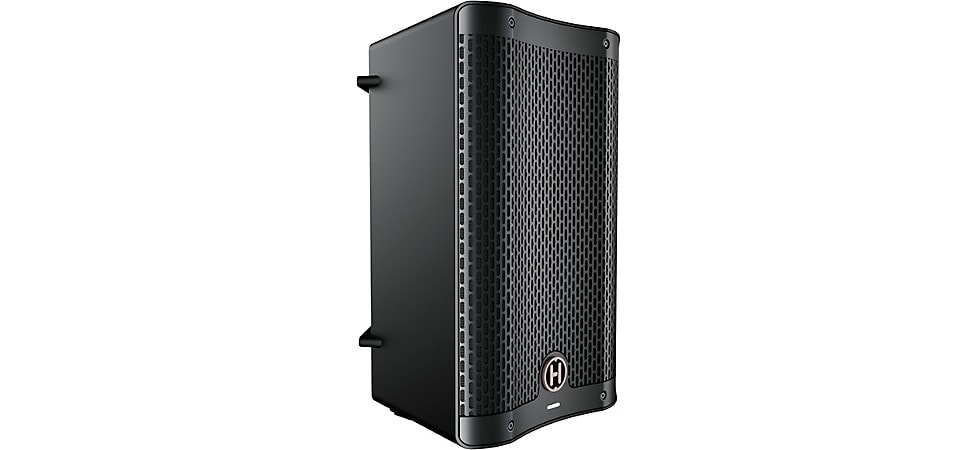
Is that what prompted the decision to go with polyetheretherketone—or PEEK—tweeters for the V3412 and V3415?
Yes. Challenging ourselves to go beyond standard expectations brought us to PEEK, and we believe we’ve incorporated that material for the first time into the world of mainstream powered speakers.
PEEK tweeters are all about accuracy and consistency in program reproduction. PEEK components maintain their integrity even when confronted with heat and vibration. A PEEK diaphragm maintains its intended shape and mechanical integrity as it moves in and out—instead of bulging in the middle, getting wobbly or otherwise deforming. When you lose mechanical integrity, it causes distortion. Instead of reproducing a sound precisely, you're altering that sound—which isn't quite what you wanted.
We noticed PEEK tweeters were being used in some high-end line arrays and premium monitors—which made sense as those systems need to deliver clarity and low distortion. In fact, when you combine low distortion with high volume, that's where people really hear a difference. So, we thought PEEK tweeters could be a key to a big advance in sound for our powered speakers as well.
Those who have heard the V3412 cranked up to maximum have told me, “Wow. We’ve turned these up to the point where other powered speakers get really aggressive—especially if you're directly in front of them. But with these, the music is certainly loud, yet not overwhelming. My ears don't feel attacked. When I’m alongside the speaker, I can even hear people talking to me with elevated voices more clearly—which is not the experience with a lot of speaker systems at this volume.”
These types of comments show me that our PEEK-equipped speakers are providing a listening experience that's going to work better for audiences, as well as performers.
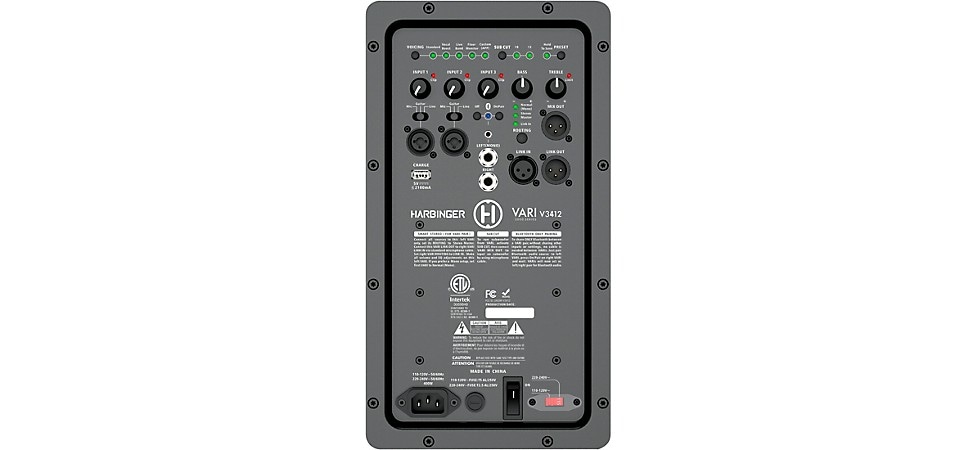
Did the performance of the PEEK tweeters cause you to revisit the sound of the woofers?
Absolutely. For the first prototypes, we kept the same woofer as the 2300 series. But as the tweeter was much better, we had this weird mismatch—kind of like big, strong arms with skinny legs. It was obvious to us if we were going to get this good on the high end, we'd also have to get that good on the low end. We had already chosen to spend more money for the tweeter, so we did the same for the woofer. As a result, the new generation costs $50 more for the customer than the old generation. But we used that budget increase to make the new speakers sound better, as well as add new capabilities, such as app control and easy subwoofer integration. We think customers will agree the V3412 and V3415 are unbeatable values for this level of sound and features.
What are the benefits of using gas-assisted cabinets for the 3000 series?
Think of it this way. Imagine you were going to squirt plastic into a box to fill it up. One way to do that is to have a hole at the top of the box and pour in the plastic. But what happens in that case is you end up with some places where the plastic is tighter packed and some places where it's less tightly packed. The reason, in part, is because the plastic is cooling as it flows, and there's nothing to keep forcing it along as it cools and flows more slowly. As a result, the material inside the box may not have great coherence, and the density of the material may be inconsistent.
What gas assist does is shoot the material into the box using nitrogen gas. This method forces all the plastic to jam its way into the box, packing it as tightly as it can be. The plastic is completely consistent as a result. There are no air voids, or situations where the material is dense at the edges but not as dense in the middle—it's equally dense everywhere.
In a speaker system, you don't want inconsistency, a lack of rigidity, air voids and stuff like that. So, the box surrounding the drivers in the V3412 and V3415 has total continuity. That's what gas assist does.
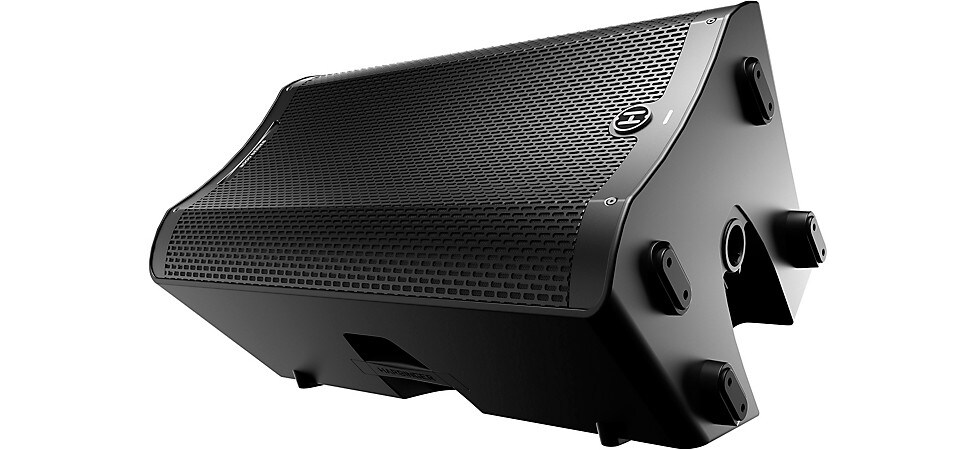
Was gas assist used for any previous Harbinger models?
No—we did not use gas assist in the past. But we agreed to start making the new V3412 and V3415 cabinets that way, because, again, this was part of the big quality upgrade we discussed earlier.
Powered speakers have so many potential use cases these days. They’re not just for DJs or bands—they could be used for conference centers, or immersive audio on theme park rides. How do you design a single speaker for multiple jobs? Do you have to make compromises for one specific use over another?
So, this is where it's really cool that the VARI Live speakers use DSP, because we have multiple voicings available. In a conference center, for example, it's a public address system. You're projecting people speaking. For this use, you want to cut off all of the low frequencies, as well as push vocal articulation to let you hear Ps and Ts, but without any sibilance. That's why we provide a speech voicing.
However, if you are doing sound for a roller coaster, that's basically like a club. You want to hear really great, low-impact bass. So, our club mode has hyped bass and a little reduction in the treble to avoid ear fatigue if you're listening all night long. We also offer a floor monitor voicing. There are four dynamic bands of EQ that make up those voicings, and you can edit them yourself.
For example, let’s say you're responsible for sound at your church, and you notice the chapel has a standing wave at 200Hz. If the priest is talking and hits a certain frequency in his vocal register, it’s “Whoa—voice of God.” While that's impressive, we don't want to hear that jump every time he's speaking. So, we need a notch at 200Hz for our venue. You can go in, put that notch in there and save it as your custom voicing or a top-level preset. The EQ is very intuitive—touch and drag, WYSIWYG [What You See Is What You Get]—like you'd see in a plug-in. You can dial in exactly the right sound for your application.
Our last speakers had DSP, but not app control, so the voicings were our version of a particular sound, and a user couldn't do anything about it. Now, with the free app we provide, you can fully customize the EQ and dial in the perfect sound for your venue.
And because the app is Bluetooth and works on your phone, you don’t have to stand behind the speaker to get to where the controls are. You can stand in front of the speakers during soundcheck, play your songs and tune the music to the room. When the audience arrives, and your high end goes away as it’s absorbed by the crowd, you can have somebody walk out into the audience with an iPad and pull the treble back up.
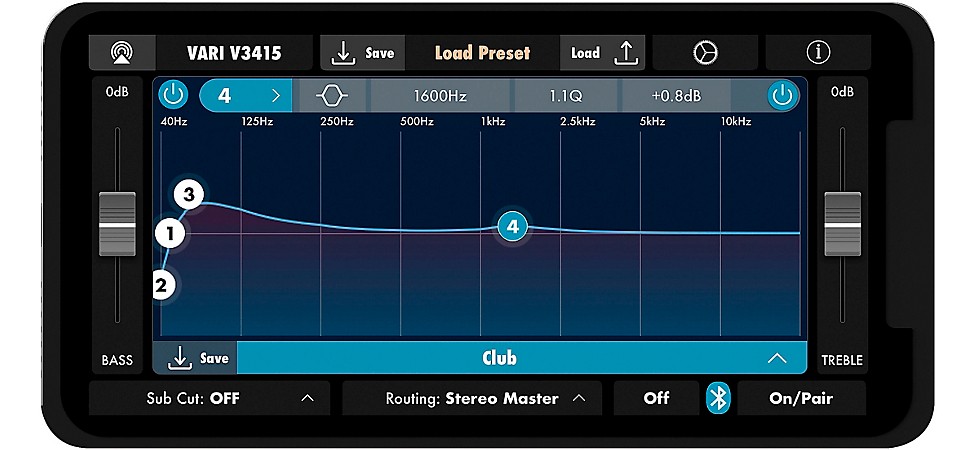
Bluetooth is now a “must-have” feature on so many audio products.
Bluetooth is super valuable, because it has so many applications—especially with a VARI Live system. For example, if you’re practicing with your band and you want them to hear something you found on YouTube, the classic way to do that is to hold your phone up to a microphone—and then put your hand around the mic to get some bass response. [Laughs.] But, Bluetooth—bam. It's full-fidelity, full-range wireless playback, and now your bass player can hear the bass parts. And when you’re done playing the track, you’re immediately back into band mode.
Bluetooth is also great for playing music during band breaks, or at a party. You don’t have to search for cables or plug anything in.
What’s the difference between Bluetooth Stereo Linking and Smart Stereo?
The only case where you’d want to use Bluetooth Stereo Linking is for streaming music or playing backing tracks via Bluetooth audio. Nothing else. Here's the reason why: Bluetooth wirelessly pairs to the VARI speakers from a single playback source. It’s fast and super convenient to play your tracks without having to use more cables. But if we incorporated the analog inputs—the mics, a guitar, a keyboard or whatever—there would be issues with latency.
This is why you have the option to send analog audio from a master VARI Live speaker to another one with Smart Stereo. It’s just one cable and it links two speakers at the speed of light. No latency, and everything “auto magically” happens for you. You don't have to think about it. All of the sound settings you make on the master speaker apply to both speakers. You get a proper right/left stereo perspective, and if you turn up the bass, it changes on both speakers simultaneously.
Our Smart Stereo world also has subwoofer integration. The master speaker—in addition to throwing your input sounds over to the satellite speaker—also has a Sub Cut button. When you activate that feature, the really low frequencies are removed from the speaker and assigned to the Mix Out jack, where you can connect your subwoofer. There’s a perfect crossover frequency between the main speaker and the subwoofer, and the entire 2.1 system is managed by the controls on the master speaker or the app.
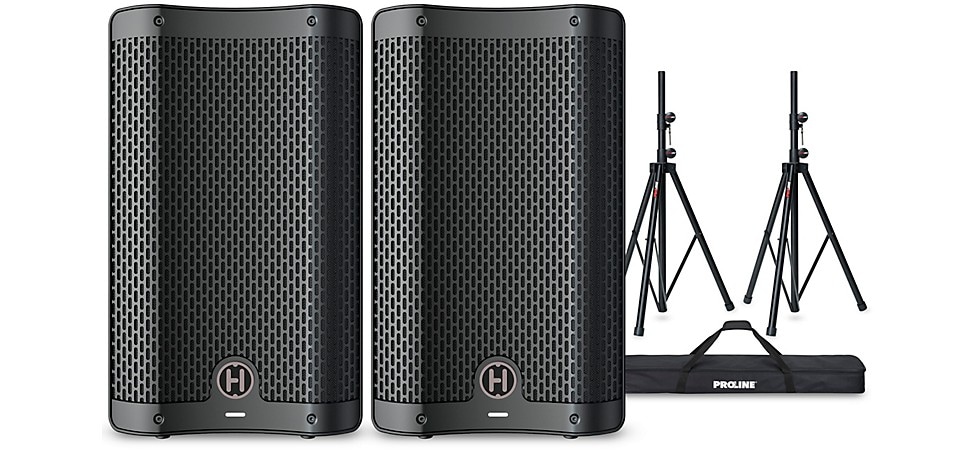
Everyone knows bass frequencies are omnidirectional—and this is where a little knowledge can be a dangerous thing—but we’ve all seen acts with subwoofer systems where the low end is just weak, disappointing and totally whack. Can you provide some tips for helping bands avoid subwoofer sludge or limp low end?
The optimum setup for phase coherence is to ensure the two main speakers are an equal distance from the subwoofer, and that all speakers share the same front plane. We know that positioning is not always possible. There may not be enough room in the club, the band may be tripping over the sub on stage, or if you’re playing a wedding, the photographer may want the sub far away from the dance floor so he or she can scoot around to get great pictures. All of those situations can put the main speakers out of phase with the subwoofer, and the result may be low-frequency waves that don’t align—which can cancel out the bass. You’d be like, “I have a subwoofer setup. Where’s my big kick drum sound?”
We actually have a great problem solver built into our subwoofers, and that’s our Time Aligning Delay control. All you have to do to get maximum bass from less-than-optimally placed subs is turn the knob until you hear the low end you want. The control can align the crests of the low-frequency waves produced by all speakers until they’re working together properly, maintaining phase coherence and producing the fattest bass tones.
We also wanted to make the feature brain-dead simple to use. There's a design philosophy I call "four by four," which means, “after four beers at 4 o’clock in the morning, you still know how to use it.” [Laughs.] That’s why the time-align feature has no display, no values and no parameters. There's just a knob. Turn it until it sounds good. You're finished. It’s really a powerful and intuitive problem solver.
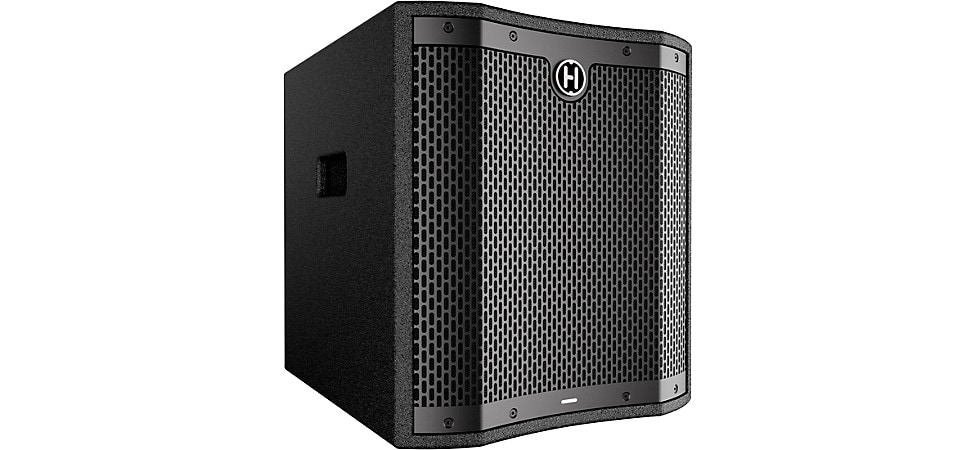
One of the things that keeps coming up in this discussion is adapting exceptional features for a musician-friendly space that’s intuitive, quick and useful—especially during live performances.
I think a great opportunity for design is making something simple, straightforward and elegant. Include only what you need, and leave out everything you can. I just feel that's a great way to serve customers.
Another design concept that someone shared with me is the 80/80 rule—give people 80 percent of what they need to do 80 percent of what they want to do. If you try to give them 100 percent of what they need for 100 percent of use cases, everything balloons out and bloats up into some other thing that’s too complicated, too hairy, too expensive and too option overloaded. That has always worked for me, because I'm not an engineer. I'm a user. I perform with a band regularly, and I really live the performance experience. I try to put that live-performance sensibility into our products, and I have a good sense of what I can take out.
And it's not always about taking things off, either. Sometimes, it's about adding things.
For example, you typically get mic/line inputs on a powered speaker, but we give you three modes—mic, line and guitar. Why? It’s because I know so many people who use powered speakers for solo acoustic gigs. It's just the artist, their vocals, an acoustic guitar, the people in the pub and a powered speaker. Well, there should be a Hi-Z input on the speaker to preserve the tone of your acoustic guitar.
Real-world applications can sometimes trump science and engineering.
Well, you need all of that when developing products, but I feel my job is to support everyone out there who is gigging every weekend. After all, I know what would improve their performance and enhance the audience experience.
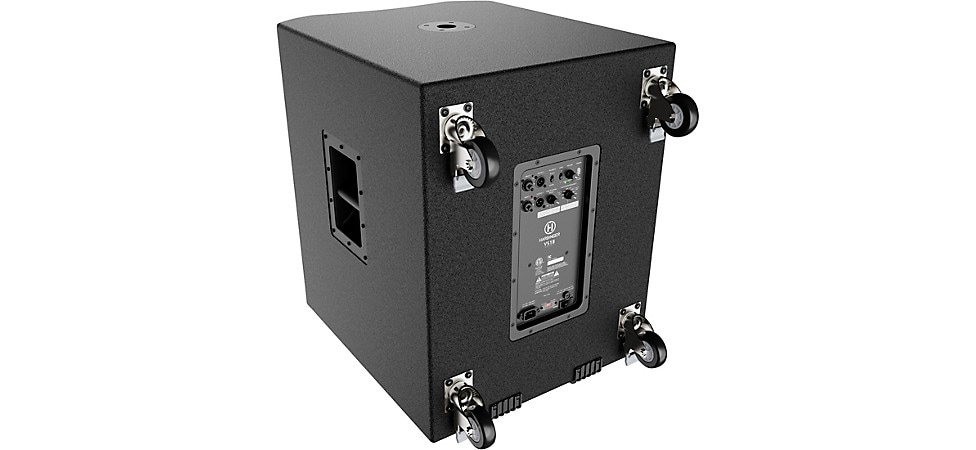
Was there a moment when you stood in front of a VARI Live speaker and thought, “Yeah. We nailed it”?
Absolutely. When we listened to full-range music on the very first VARI Live prototype with a PEEK tweeter, it was night and day—an absolute revelation. The PEEK tweeter was a huge leap forward.
And this was even before you upgraded the woofers, right?
Yes. This is why listening tests and competitive analysis are key. We felt we could hit a little harder in the bass, and we got fired up to truly excel with our low-end reproduction. We decided we couldn’t get there with our current driver. It's a physics thing. We needed more magnet and more metal mass on the speaker to gain more physical movement of the cone in order to get the bass response we were looking for. In fact, our extended low-frequency response is now one of the things I've found people really appreciate about the V3412 and V3415.
Throughout all of the development phases, did you have a particular end user in mind to keep some of the design goals on track?
What I wanted to do initially was to truly satisfy the needs of professional DJs, as well as gigging bands—both of which are going out in front of audiences every weekend, if not multiple times a week. I wanted to get to the level where those people could say, “I didn't buy this because it was the one I could afford. I bought it because it's the one that serves me best.”
Views: 12
Comment
© 2025 Created by Janelle.
Powered by
![]()
You need to be a member of NASTYMIXX to add comments!
Join NASTYMIXX